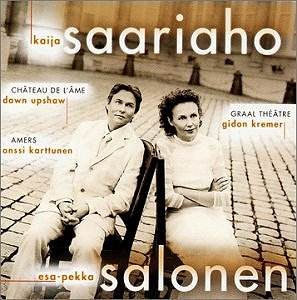 Composer: Johann Sebastian Bach
Composer: Johann Sebastian Bach
Works: Cantatas BWV 1-64 (selected from Vol 1)
Performers: Gächinger Kantorei, Bach-Collegium Stuttgart, Figuralchor der Gedächtniskirche Stuttgart; Soloists: Arleen Augér, Nancy Burns, Inga Nielsen, et al. (Sopranos); Julia Hamari, Helen Watts, et al. (Altos); Aldo Baldin, Peter Schreier, et al. (Tenors); Philippe Huttenlocher, Dietrich Fischer-Dieskau, et al. (Basses)
Recording: 1968-1985
Label: HAENSSLER
Johann Sebastian Bach’s cantatas, a cornerstone of the Baroque sacred repertoire, emerge as multifaceted works that encapsulate theological, musical, and emotional depth. Helmut Rilling’s recording of the first volume of Bach’s sacred cantatas stands out as an ambitious undertaking, presenting a comprehensive exploration of works BWV 1 through BWV 64, albeit with some omissions. Rilling’s approach, which diverges from the historically informed practices established by pioneers like Gustav Leonhardt and Nikolaus Harnoncourt, offers a more conventional interpretation characterized by modern instrumentation and vocal techniques.
Rilling’s choice to utilize a large pool of vocal soloists—over 40—infuses the performances with a varied texture that distinguishes this set. While this multiplicity may detract from a sense of unity across the recordings, it also allows for a rich tapestry of vocal colors, accommodating the diverse demands of Bach’s score. For instance, the opening of cantata BWV 19 showcases Rilling’s choral forces in a vigorous and energetic manner, with the vibrant orchestration effectively complementing the choir’s robust sound. Here, the brass and timpani elevate the joyous character of the work, reminiscent of the monumental choral movements found in the B Minor Mass.
In terms of interpretation, Rilling’s ensemble is marked by a lush, full-bodied sound that, while engaging, occasionally sacrifices the subtleties inherent in Bach’s intricate counterpoint. The sinfonia of cantata BWV 4, for instance, is played with a heavy hand, prioritizing a dramatic flair over the delicacy typically associated with Bach’s orchestral writing. This propensity for a more forceful interpretation is evident throughout, where the choir’s powerful delivery can overshadow the nuanced interplay of voices. Nevertheless, Rilling’s ability to elicit a rich choral texture remains one of the set’s strong points, particularly in the poignant Weinen, Klagen, Sorgen, Zagen from BWV 12, where the choir’s blend achieves a remarkable balance of transparency and depth.
The sound quality, captured over several years, reflects the technological advancements of the time, though some early recordings exhibit limitations in clarity and balance. However, as the set progresses, the engineering improves significantly, allowing the listener to appreciate the intricate orchestration and vocal lines with greater fidelity. Comparatively, Rilling’s interpretations stand in stark contrast to Harnoncourt’s lighter, ethereal handling and Leonhardt’s historically grounded approach, where the latter ensembles are characterized by smaller forces and a more transparent sound. Rilling’s decisions, while arguably less authentic to Bach’s original performance context, create a sweeping and dramatic effect that can be compelling in its own right.
Specific performances within this collection shine brightly; for example, Peter Schreier’s contributions as a tenor are consistently exemplary, particularly in BWV 16, where his clear, rich timbre brings a heartfelt sincerity to the text. Conversely, while Arleen Augér’s soprano is often radiant, her occasional over-reliance on vibrato can detract from the purity of some passages. The diversity of voices adds to the set’s overall character, yet it presents challenges in establishing a cohesive sound, particularly in the alto and tenor sections, where a more consistent roster of soloists would have fortified the performances.
The vast landscape of Bach’s cantatas is richly represented in this 20-CD box set, showcasing an array of emotional and spiritual dimensions. Rilling’s vision, though not without its detractors in the historically informed camp, provides a captivating entry point into Bach’s sacred music. The breadth of this collection, combined with the interpretive vigor and choral excellence Rilling consistently delivers, makes it a significant contribution to the Bach discography.



